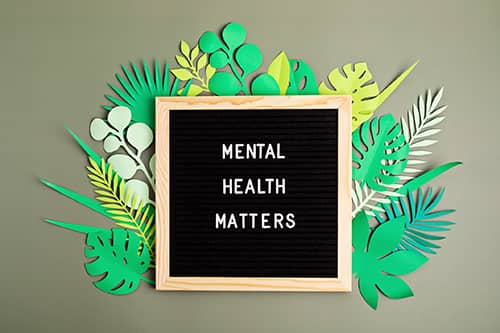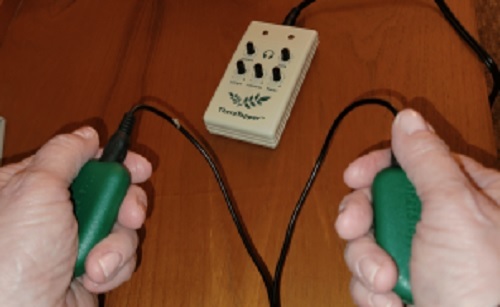


OUTPATIENT MENTAL HEALTH
Experienced therapists, Three office locations, covering most diagnostic categories options for telehealth services within Wisconsin.
OUTPATIENT SUBSTANCE ABUSE/CO-OCCURRING DISORDERS
Experienced therapists who are certified, licensed or trained in both mental health and substance abuse, Individual and family AODA therapy, evidence-based care.
DIALECTIC BEHAVIOR THERAPY GROUPS
Weekly in-person groups availabile for teens and adults offered at Brown Deer location. Services also available on a one-on-one basis.
INTENSIVE IN-HOME THERAPY
Intensive in home therapy, a form of psychotherapy for more severe clients who can benefit from meeting 2-4 times per week at home.
PSYCHIATRY
We have a child/adolescent psychiatrist providing evaluations and medication management.

Check out our tabs below where we have extensive information about these 6 areas of concern.
Check out our article What Is Psychotherapy?
We also have an article for you explaining The Mental Health Professions.
Check out an important article Psychotherapy Research Findings You Should Know About.
All of our care is evidence-informed.
We accept most employer-based commercial insurance, Medicare & Medicare Advantage, Medicaid (State insurance, Badgercare), HMO, and cash payments.
Please take 5-6 minutes to learn about the goals and methods of couples therapy, also called marriage counseling or marital therapy.
Pease also see related articles to the right or below.
At some point, one partner or both members of the couple decided it was time to seek help for one of these problems. The couple then may be on the brink of breaking up or they may be trying to repair the distressing state of their relationship.
When they call for help, we try to make it as easy and as quick as possible for couples to get the help that they need.
2) Goals of Couples Therapy
Let me say something about the goals of therapy for couples.
We make individual goals that fit your particular situation. For example, if excessive arguing is the problem, - reducing arguing and making the discussion of differences more cooperative and peaceful - will be a goal. If the problem has to do with one member's relationship to this family-of-origin being too involved, we may set a goal for understanding the importance of defending and protecting your own couple relationship.
However, marriage and family therapists have more general goals for all couples. Here are those goals.
These are some of the benefits couples therapy can offer:
These are some of the strategies a couples therapist might employ:
Over the years, researchers have discovered numerous ways to work with couples. Some of these methods go into your history and an understanding of how your upbringing and personal history and relationships shapes how you behave in your current relationship Other approaches look only at the behaviors going on in the relationship now and try to work towards having you behave in ways that we know are much more effective and successful for couples.
In order to learn the kinds of behaviors that help them succeed, researchers have studied the most effective, happy, and compatible couples. It's a little bit like studying a group of 100 year-old people to find out all of the things they did in order to have a long life. We have the same idea about a long and successful marriage - study marital success and help people emulate that.
We hope our knowledge of couples and marriage will help you to be like those marital successes.

15 Common Couples Conflicts & Differences
We explain 15 themes couples quarrel about, 10 reasons they divorce, and 15 skills to avoid conflict
Three Tasks to Improve Relationships
Asking how your partner shows love and what you want to keep in the relationship are powerful tools.
One Step, Two Step Dance of Couple Misery PART 1
Arguments seem to go nuclear in an instant! Let’s analyze why and 10 steps that go very wrong
One Step, Two Step Dance of Couple Misery PART 2 - Repairing Your Relationship
17 Steps to practice to reduce conflict, to repair and save your relationship
10 Ways Marriage Counseling Helps
Discover 10 powerful ways marriage counseling and marital therapy can help couples improve communication, resolve conflicts, and build stronger, healthier relationships.
Marriage & Couples Therapy - A Comprehensive Introduction
This is a pdf version of our entire Marriage & Family page explaining Couples Therapy problems, goals, methods, outcomes.
Talking through problems with the guidance of a family therapist leads to your family getting along better, feeling happier together, resolving conflicts, and understanding one other better. Family therapy shows excellent results for children with behavioral problems. This page will tell you all about it and why calling for family therapy is a great idea.
We have learned that problems - especially in children - are not merely inside the one person. Rather, family members are always influencing one another. We know that strengthening our bonds and attachments leads to improvement. We also know families can reinforce improved behavior.
You will discuss problems under the guidance of a family therapist, who gives everyone time to talk, encourages each person to listen to other members, and gives guidance on how to shift reactions and patterns. That helps you change the patterns that lead to problems.
Research shows that many behaviors of children and adolescents improve better in family therapy than individual therapy. Families learn to better manage AD/HD (attention deficit), opposition and defiant children, anxious children, and children who have experienced major changes in the life. Family therapists look at the whole family and explore how each member's behaviors and attitudes impact others.
We aim to shift how a family functions.
You want your family to be happier and all to get along better. Whether this is family with two parents and children, one parent, adopted children, grandparents raising a grandchild, whatever your family structure may be, don't wait to strengthen your family bonds. Contact us today to learn more about family therapy and how it can benefit your family. Our team of experienced therapists is here to support you.
Call the clinic today to learn about family therapy. The therapists are ready to help you and your family.

Major Ways Therapy Helps Children
An important explanation of how child & family therapy help kids’s self-esteem, social skills, academics, symptoms, & positive behavior
Welcome to our dedicated space where we list myriad adult mental health problems for people 18 to 90+. Psychotherapy can help at virtually any age. There is almost no age to young or too elderly.
Mental health is as vital as physical health. It’s estimated that half of doctor visits for pain, headaches, and other problems are in large measure due to psychological factors!
Call us with your questions at 414-540-2170 or email referrals@shorehavenbhi,com or use the Contact Us link above.
This page about adult problems has three purposes.
Acknowledging the need for help is a significant first step towards healing, recovery, and improvement.
Come for therapy as soon as problems show up. Early intervention plays a pivotal role in treatment. Research shows that the faster you come for help during a psychological crisis, the easier it is to help you and the more quickly you can achieve recovery from most mental health problems.
Here's why prompt action is crucial:
A. You may not be aware that 50% of all the people who come to see us improve in somewhere around 8-10 sessions over the course of about three months.
B. Another 30% improve over the course of about six to twelve months or about 25 sessions.
C. About 10% of callers require between one and two years to improve fully, about 100 sessions. Those would be
people with an addiction problem who need not only intensive care at the beginning, but longer term follow up
people with very troubled marital problems
people with complex problems of several types, what we call Co-Occurring Disorders, such as psychiatric and severe medical disorders that occur together
people with certain personality problems such as borderline personality
D. Only about 10% of callers need therapy that is very prolonged or perhaps of indefinite length. But that therapeutic support helps them to have a better quality of life and maintain themselves in the community.
Recognizing the signs of mental health issues is the first step towards seeking help.
Here's a checklist of some of the conditions that often lead adults to come to psychotherapy. Perhaps you recognize your problem in this list.
- Adjustment to life changes, accompanied by anxiety and/or depressed mood
- Adjustment after loss, breakup, divorce, incarceration, legal problems, a troubling medical diagnosis, or other major life change event(s)
- Adult Attention Deficit/Hyperactivity Disorder
- Alcohol use problems
- Anger problems
- Anxiety, including excessive worry, panic attacks, agoraphobia (fear of going out or places that are crowded or malls or big stores), troubling phobias
- Bipolar Disorder, formerly called Manic Depression
- Body Dysmorphic Disorder - severe dislike of body image or body part
- Borderline Personality Disorder (BPD) and other personality
- Bulimia Nervosa, binge-purge syndrome
- Cancer care psychology, coping with cancer
- Cannabis (marijuana) problem
- Cocaine use problem
- Coping with change
- Coping with care-taking for a loved one with a severe illness or dementia
- Coping with family conflicts, losses, and changes, including births, deaths, breakups, etc.
- Coping with medical problems or a medical diagnosis
- Coping with life events that strain your capacity to cope
- Coping with MS, early cognitive loss, stroke, etc
- Couple or marital problems
- Cutting, and various forms of non-suicidal self-injury
- Crisis situation, usually due to some life change events
- Depression or Clinical Depression, also called Major Depression
- Dissociation, including multiple personality, also known as Dissociative Identity Disorder
- Dying from an illness, anticipatory grief
- Eating Disorders, binging, purging, excessive restricting, anorexia
- Family stress, family conflicts
- Gambling problems
- Gender concerns
- Grief, loss, separation, prolonged grief
- Headaches associated with anxiety, tension headaches
- Heroin, opiate use, pain medication overuse problems
- Hoarding
- LGBTQ+ concerns
- Marijuana use
- Obsessive-Compulsive Disorder (OCD), obsessions, doubts leading you to repeat certain behaviors over and over
- Older adults adjusting to age and losses
- Opiate use
- Overuse of medications
- Personality Disorders
- Post-Partum Depression or anxiety
- Post-Traumatic Stress Disorder (PTSD)
- Pre- or post-surgery emotional problems
- Procrastination and task paralysis
- Recovery from assault, sexual assault, molestation, sexual abuse
- Recovery from the effects of a bad childhood or relationship
- Schizophrenia and other psychotic disorders and paranoia
- Seasonal Affective Disorder (SAD) - depression coming mostly in winter months
- Self-cutting, suicidal thoughts
- Sleep Disorders - insomnia, nightmares, waking during the night and not getting back to sleep
- Stress such as being a caretaker, job problems, family stress
- Trauma
- Under-achievement
- Workplace stress
Acknowledging the need for help is a brave and critical step towards recovery. If you or someone you know is experiencing any of the mental health problems listed above, consider seeking professional therapy ASAP. Remember, mental health is a crucial component of overall well-being, and there is strength in seeking help.
Perhaps you are seeking a particular kind of therapy that we offer. For example, you may be seeking eye-movement desensitization and reprocessing therapy, also known as EMDR, which is a treatment that is highly effective for trauma. Or you might be seeking cognitive behavioral therapy, also called CBT, or play therapy for children, or psychoanalytic therapy. We offer the main evidence-based forms of therapy.
Perhaps you are unsure of the specific problem, but you feel some need for help and support.
Therapy always begins with some assessment of the problem in which we’ll evaluate what your concerns are, what your goals may be for this therapeutic encounter, and how we may recommend the best program of care to help you. All of our care is evidence-informed and we are aware of some of the latest research in medicine and psychiatry that affects the best practices in psychotherapy.
We hope that you will not hesitate to use psychotherapy services as soon as you feel some need. Do call us and we will respond to your questions and hope that we can get you an appointment within just a week or two of your call.
Please read our other articles about adult problems on this page:
Adult Problems in Living
Psychotherapy Helps Develop Psychological Skills for Effective Living
The Importance of Professional Help

7 common challenges leading adults to psychotherapy
Psychotherapy Helps Develop Psychological Skills for Effective Living
Introducing cognitive, social, behavioral, listening, & communications skills helped by therapy
9 ways psychotherapy leads to change
Mental Health Matters – Recognizing When to Seek Help
Reasons to seek therapy and the evidence for how well therapy works
Let’s make sure you understand key points about Substance Abuse or Drug Abuse, Substance Use
Disorder, Addiction, Alcoholism, Drug Dependence, Substance Abuse Counseling, Relapse Prevention.
We want this page to be a resource for you or for helping someone important to you should there be a
problem with alcohol, drugs, prescription drugs, gambling, or other such compulsive behaviors.
Abuse vs Addiction. The difference is a matter of degree. We now talk about Mild, Moderate, or Severe Substance Use Disorder (SUD) rather than abuse and addiction.
Abuse. Mild-to-moderate SUD marked by continued use despite mounting consequences, failure to fulfil role expectations (e.g., missing work, poor concentration due to high concentration of chemicals in the bloodstream, or at home by spending time using or recovering from use rather than participating), perhaps use in dangerous situations (e.g., driving while intoxicated, operating heavy equipment). Causing distress to others in the family.
Chemical Dependence. Addiction is generally thought to be a body and brain disease. One can be addicted to substances, such as alcohol (including beer), amphetamines (speed), opiate (heroin, morphine), cocaine, marijuana, tobacco, or certain prescription drugs, especially tranquilizers and pain medications (usually opiates). Dependence is marked by higher levels of tolerance (using more to get the effect or not being very much impacted by high amounts of chemical), withdrawal symptoms when stopping (yes, marijuana can also cause withdrawal), compulsion or compulsive use, and a life increasingly centered on using.
Behavioral Dependence. You may be surprised to learn that one can be addicted to activities, and in the
brain, the effect is similar to the addiction to chemicals. These activities include gambling, sex, food,
spending, gaming, and Internet use. These activities can start to be used compulsively, using more and
more time, when you know it would be best to cut back or stop, and using to the neglect of other
responsibilities.
Addiction is marked by tolerance for large amounts of the substance or activity, devoting more and more
of your life to getting and using the chemical or activity, loss of control after starting so that you do more
of it than you intend or you can't stop with only a small amount, and adverse reactions when stopping
use [withdrawal]. These problems are usually chronic, with frequent relapses.
Alcoholism and Alcoholic. These are terms used to refer to any inappropriate pattern or use of alcohol. Typically, the person finds the substance or activity very rewarding on the one hand, and very troubling on the other, causing illness and life problems. Sometimes, the substance makes a person with mental health problems feel more normal, less depressed, or more relaxed. Eventually, the addictive and harmful nature of the chemical or activity takes over.
Hallmarks of an Addiction/Dependence
Rehab. Rehabilitation or Rehab is the term for primary treatment, meaning a place to go to get sober. Most people think of these as 28-day or 30-day residential programs. A lot of athletes, celebrities, and public figures tend to go to these facilities. Most people recovery in outpatient settings like Shorehaven. Rehab is used for people with more severe, persistent, and often relapsing forms of SUD.
Co-Occurring Disorders, Dual Disorders, Integrated Care. This means the person has both a Substance use Disorder and a Mental Health Disorder. He or she may also have medical problems. Common Mental Health Disorders that are associated with SUD are Borderline Personality, Conduct Disorder, Antisocial Personality, Bipolar Disorder, Pathological Gambling, Sexual Disorders, Depression, and others.
Integrated Care. For decades, and still sometimes today, these two major kinds of problems are treated differently. At Shorehaven, all of our counselors who specialize in treating substance use problems are also licensed to treat mental health disorders at the same time. That is called Integrated Care.
Harm Reduction Vs. Abstinence. The prevailing philosophy in the USA has always been an abstinence approach, 100% sobriety. In most other countries, a harm reduction approach is used. What that means is to get people to use far less and to use more safely if they’re planning to use. It means if they have a lapse, aim so it does not become a relapse, and if they imbibe, they do not lose control. It means increasing the percentage of days the person is sober. It means increasing the time between uses to days or months or years. It means improving any co-occurring disorders the person may have despite the fact that they may still be using on occasion. On a community wide level, we might see needle exchange programs and outreach to people who are using in order to help them get medical treatment.
Relapse Prevention (RP). Relapse prevention is a series of skills that we use to help people stay abstinent. Its methods include anticipating situations in which one might have a temptation to use or exposure to the chemical. Liquor stores, casinos, restaurants that serve alcohol, these are all over our environment. A major temptation could be our own families. That is especially true for staying off alcohol. We need to learn to refuse to use. We need to learn to be to anticipate exposure to these situations and to maintain sobriety despite these temptations in our environment. RP is a group of techniques for behavioral control and cognitive control (how we think).
The accompanying article, Substance Abuse, Co-Occurring Disorders, Recovery, & Medication-Assisted Treatment, goes into more detail on some of these points.

Distilling years of experience into 10 crucial elements for your recovery work
“Strength and Serenity” is our treatment brochure. Change it to Helping You find Your Strength and Serenity.
Start your recovery at Shorehaven, are you ready for change?
Substance Abuse, Co-Occurring Disorders, Recovery, & Medication-Assisted Treatment
Expanding this webpage, we give you more about substance use disorders and recovery and a pdf of this page for you to save.
Your Best Bet: Understanding Gambling Addiction
A thorough overview of gambling poblems, the symptoms of problem or pathological gambling, the 4 phases of gambling addiction, and some thoughts on treatment. Includes Gamblers Anonymous questions and steps.
We at Shorehaven have an 8-member EMDR clinical team so we can offer access to EMDR rapidly. The team works together to study advanced EMDR protocols and to bring this remarkable therapy to as many people as we can. We want to introduce EMDR.
EMDR transforms the experience of individuals in the aftermath of traumatic experiences. EMDR therapy is predicated on the principle that the mind can heal from psychological trauma. Numerous studies validate the effectiveness and speed with which EMDR helps us heal from most cases of post-traumatic stress disorder (PTSD) and many other problems.
EMDR is designed to alleviate the distress associated with traumatic memories through a structured eight-phase treatment process. We take a history of the person and the problems, find out about the unpleasant experience, explain the therapy, and then use bilateral stimuli (BLS) to desensitize the painful memory. BLS can be moving the eyes from side to side, tapping on the knees in an alternating pattern, or listening to sounds presented to the ears in an alternating pattern.
The photo shows a TheraTapper, which causes the green bulbs to vibrate in an alternating pattern. The device also presents tones through headphones, again alternating ears. These methods can be used instead of eye movements. All these methods work.
Painful memories are virtually always associated with negative thoughts about ourselves. For example, we might think what happened was our fault when it was not. We may think of what happened and think "I am helpless" or "I am alone." EMDR transforms those thoughts into more positive ideas.
We understand BLS activates brain systems that store the painful memory. As a result of the desensitization, the brain's information processing system re-activates and "reconsolidates" the memory in new ways.
Maria, a 35-year-old woman, sought treatment for severe anxiety and flashbacks stemming from a car accident she had experienced five years prior. Despite her initial skepticism after conventional therapy had provided limited relief, she agreed to try EMDR therapy. During the course of her EMDR sessions, Maria focused on the memory of the accident while her therapist guided her through bilateral stimulation exercises. As the sessions progressed, Maria noticed a significant decrease in the intensity of her flashbacks. The memories of the accident, once vivid and distressing, began to feel more distant and less emotionally charged. By the end of her treatment, Maria reported feeling a newfound sense of peace and resilience. She was able to recall the accident without the overwhelming anxiety that had plagued her for years. Then she could drive in the area where the accident occured - with no anxiety or avoidance.
EMDR therapy is a highly effective treatment for trauma and PTSD, as well as depression, anxiety, and many other problems, offering hope and healing to those burdened by the weight of their past experiences. Its ability to facilitate rapid processing of traumatic memories, coupled with its comprehensive treatment approach, makes it a valuable tool in the field of psychotherapy. For individuals like Maria, EMDR therapy has paved the way for a life free from the shackles of trauma, underscoring the transformative power of this therapeutic modality.

EMDR re-processes painful memories, anxiety, and depression effectively, usually quickly
We will define psychotherapy for you. Then we will tell you the details of eight therapies commonly used at Shorehaven.
Get started now. Call us with you questions or to make an appointment, 414-540-2170.
In order to understand emotional problems and to help you recover from them, Psychotherapy uses proven principles of psychology. With a deep understanding of the mind and behavior, psychotherapists study the ways to change behaviors that cause our symptoms, impairments, and problems. Psychotherapy is designed for CHANGE.
to change thinking patterns
to change behavioral reactions
to change emotional reactions
to change behaviors
We help create changes in the directions that are more desirable for healthy emotional adjustment - free of psychiatric symptoms.
With such a complex of psychological principles at the heart of therapy, it is no wonder it takes 6 years of higher education and 2 years of post-Masters training to become a psychotherapist.
The most important factor is a special professional relationship, called the Therapeutic Relationship. Researchers have broken that down into a few crucial elements.
Therapeutic Alliance - agreement on the importance of therapy, the goals of the therapy, the methods to be used
Rapport - a feeling of connection, bond, compatibility
Empathy - therapist capacity to understand how the client feels
Hope - increasing hope that the problems can be solved and symptoms can be reduced
Understanding - of the inner thoughts, feelings, and patterns in the clients mind and thinking
Acceptance - that the client is doing as well as he or she can, trying to adapt
Openness - that the client shares his or her thoughts, emotions, history, and perceptions
Some of the psychotherapies most used at Shorehaven are:
(also called AODA Counseling, Chemical Dependency Counseling, or Substance Abuse Counseling (SAC), Substance Use Disorder (SUD) Counseling)
Who Developed This Method?
AODA Counseling has been developing since the 1870's. The founding of Alcoholics Anonymous in the 1930's, the development of modern counseling programs in the past 40 years, and a large amount of research in recent decades on what helps... have all moved AODA Counseling from hospitals and into clinics, where the outcome of counseling is equally effective with that found in hospitals. In the past 10-20 years, AODA counseling has stopped being entirely separate from Mental Health therapy, and more counselors such as ours at Shorehaven are trained in both AODA and Mental Health.
How the Method Explains the Development of Problems
AODA Counselors consider addiction (also called dependency) to be a kind of disease. One can be addicted to substances, such as alcohol (including beer, wine, liquor), amphetamines (speed), opioids (e.g., heroin, morphine, oxycodone), cocaine, marijuana, tobacco, or certain prescription drugs, especially tranquilizers and pain medications. You may be surprised to learn that one can be addicted to activities; in the brain, the effect is similar to the addiction to chemicals. These activities include gambling, compulsive sex behavior, food, spending, and Internet use.
Addiction is marked by tolerance for large amounts of the substance or activity, devoting more and more of your life to getting and using the chemical or activity, adverse reactions when stopping use [withdrawal], and loss of control after starting so that you do more of it than you intend or you can't stop with only a small amount. These problems are usually chronic, with frequent relapses.
These problems are on a continuum with:
Typically, the person finds the substance or activity very rewarding, often making one feel more normal, less depressed, more sociable, or more relaxed. Eventually, the addictive and harmful nature of the chemical or activity takes over one's life.
Counselors work with problem use and abuse in order to interrupt the decline into addiction.
How the Method Explains the Process of Change
AODA Counselors use many methods to help.
1. Motivational Enhancement (also called Motivational Interviewing) helps determine your readiness for change and helps you be more prepared to make effective changes.
2. Rational-Emotive or Cognitive-Behavioral Therapy methods help change the thought patterns which you use, the ones where you tell yourself the behavior is okay, the ways you rationalize or minimize or deny the problem.
3. 12-Step programs, such as Alcoholics Anonymous, Narcotics Anonymous, Cocaine Anonymous, Overeaters Anonymous, Gamblers Anonymous, etc., use group support and a program of spiritual and behavioral guidelines to help you take responsibility for changing.
4. Substance Counseling Techniques, such identifying triggers for excessive use, anticipating events so one can cope with them without a chemical, changing thinking patterns about using, rehearing responses to events, and changing lifestyle.
5. Relapse Prevention identifies the triggers and patterns for using so you can learn ways to handle them differently without lapsing back to using.
Who Developed This Method?
Many researchers contributed to Behavior Therapy, including Nathan Azrin [contingency management], Albert Bandura [use of models, vicarious conditioning], Neal Miller [biofeedback], I. Pavlov [conditioning], B.F. Skinner [reinforcement], Joseph Wolpe [systematic desensitization], and many others. Although the basic psychological principles were well developed earlier, Behavior Therapy are a treatment developed out of research beginning around 1970.
How the Method Explains the Development of Problems
Inappropriate, dysfunctional behaviors are learned. Symptoms are learned - e.g., we learn to avoid situations in which we fear having high anxiety. To continue, anxiety problems result from becoming anxious, escaping from the situation, then the anxiety goes down. That reinforces avoiding those situations in the future.
Substance use results from the enjoyment of the chemical and/or the reduction in discomfort the chemical may bring. Then we seek that feeling again. The chemical reinforces continuing to use it.
Behavior Therapists do not try to explain 'why' you are behaving a certain way. They do not think emotions and thoughts are as important to therapy as are observations of overt behavior. Rather, they focus on methods that are effective in changing observed behavior. Problems develop when the consequences of the behavior are favorable (i.e., reinforcing), making the behavior likely to recur when the same circumstance arises in the future. It may be challenging to decipher which reinforcers maintain unhelpful behaviors, but therapists work with you to figure that out.
How the Method Explains the Process of Change
Researchers have evolved many methods for direct behavior change, including relaxation therapy, which uses deep relaxation in order to change our reactions to stressful stimuli. In systematic desensitization, stimuli which now produce anxiety are carefully presented until the anxiety associated with them stops. In biofeedback, we learn to control the physiological reactions, such as brain waves, hand temperature, and muscle tension that may be associated with problems. In contingency contracting, which is often used in couples or with children, we set up a schedule for reinforcing a desirable behavior and for stopping reinforcement for undesirable behavior. Thought Stopping and Exposure Therapy are used to interfere with anxiety. Exposure with response prevention is used with OCD.
Who Developed This Method?
The forerunner of this method is Alfred Adler, but the most important modern cognitive therapists have been Aaron Beck, Albert Ellis, and Donald Meichenbaum, beginning around 1960.
How the Method Explains the Development of Problems
Beliefs. Thoughts, feelings, and behavior are related. Emotions affect our thoughts. But our beliefs and thoughts affect our emotions and how we behave. For example, if you think you must please others and it is disastrous if someone does not like you, you will feel anxious and upset when someone does not accept you - or just imagining they might not. A range of such beliefs affects depression, anxiety, substance use, and many other conditions, which are heavily influenced by our beliefs.
Cognitive Errors. Furthermore, we all have certain errors of thinking which affect how we react, such as personalizing what happens around us, black and white thinking, catastrophic thinking about the future, self-reproach when things go wrong, intolerance for uncertainty, and many other errors in thinking that may be brought to your attention. Negativity Bias is looking for information that is negative and discounting positive information. Confirmation Bias is only attending to information consistent with what you already believe. Psychologists have described almost 50 error processes and how they cause problems.
How the Method Explains the Process of Change
The counselor will use four strategies.
1. Helping articulate and change inaccurate, dysfunctional beliefs, which a person may never before have realized he or she was using. For example, "Nothing ever turns out for me" is probably a belief from childhood and does not fit all that has happened since. People with this belief often have many positive experiences they are discounting. The belief is a Negativity Bias and also Global Thinking (big, over-general ideas). When we identify an old, inaccurate belief, we will point it out.
2. Helping recognize errors in thinking so one can try other ways of evaluating experiences. We look for these errors in thinking so clients can correct them. For instance, we will work to correct Selective Attention to Negative Information, Personalizing what others do that may have no relationship to the client, or Catastrophizing that the person may not realize he or she was doing. In fact, we are all rarely aware of these errors in our thinking.
3. Helping you use techniques to make changes in your thinking, such as exercises in thinking the old way and a new way. We may have you compare your emotional reactions to thinking the old way and the new way. We may look for triggers that stimulate irrational beliefs.
4. Behavior Change and Behavior Activation are actions to take that directly change reactions. Or we suggest actions which, after doing those actions, lead us to revise our self-appraisal. Some of these are relaxation methods, thought-stopping, or progressive systematic exposure to a situation one has avoided.
Who Developed This Method?
In 1989, Francine Shapiro noticed the effect of eye movements for reducing the impact of traumatic memories. She published her research showing how EMDR significantly reduced the emotions associated with painful memories. Some clients could barely remember the event. Since then, EMDR has become the most highly researched method for treating trauma and has been applied to treating anxiety, depression, children, and many other problems.
How the Method Explains the Development of Problems
When painful experiences happen, they become impressed in the brain. To avoid the discomfort of the memories and to prevent a recurrence of the event, the mind remembers the event and feels anxiety when exposed to reminders of the event. Then, the event can be so upsetting that we keep re-experiencing it. Memories of it are so vivid, it seems as if the event happened just yesterday.
How the Method Explains the Process of Change
How EMDR heals and does so rapidly is still being investigated. The idea is the memory is "stuck" in that it can not move on into our history the way other memories do. It stays current. We know a few areas in the brain such as the amygdala and hippocampus among them, that can be conditioned to overly respond to the stimuli from the event.
We also know the EMDR activates these brain centers to, in effect, re-write the memory. Treatment causes the memory to become more a piece of history rather than a currently troubling event. As a result, the emotions related to the memory subside. Then depression and anxiety that may be associated with the memory also lift.
Who Developed This Method?
Beginning in the 1950s, Murray Bowen, Jay Haley, Salvador Minuchin, Virginia Satir, John Watzlawick, Michael White, and others began to examine how family members, including couples, influence one another and produce or maintain emotional problems. The richness of family systems therapy is reflected in the fact that a large number of valuable methods and ideas about families have arisen in the past few decades.
How the Method Explains the Development of Problems
Problems seem to arise in families in several ways. In one case, members of the family view one another in certain ways and behave towards one another in light of those views. For example, a child who is labeled as "bad" or "incorrigible" may not receive much positive reinforcement for appropriate behavior. The child begins to get "negative attention," that is, most of his or her involvement with parents is around inappropriate behavior. How much positive attention members receive, how parents work together, the boundaries between generations, the exercise of authority, the protection of children, and many other aspects of family functioning affect emotions, self-esteem, and behavior. Changes in the family, such as birth of a child or a loss, may affect how the family members cope.
How the Method Explains the Process of Change
Marriage and Family Therapists (MFT) use many methods, all of which are designed to help family members alter the way they interact with one another. For example, finding and building on the strengths and positive attributes of a child can help him or her behave in new ways. Helping the family members realize their strengths and areas of effective functioning helps refocus their interactions.
The idea is that members of the family unwittingly reinforce the behavior they would like to see change! So, they need an outsider to observe their patterns and to guide members to change those patterns. Everyone knows how repetitive conflicts and disagreements can be, like a roller coaster that we can't got off of. That's where the MFT comes in:
Who Developed This Method?
Sigmund Freud began this method in 1890. Anna Freud, Heinz Kohut, Carl Jung, James Masterson and a host of others have contributed to our knowledge of the deeper mental processes which affect our behavior. More has been written about this method than any other and it is an evolving, dynamic field that has incorporated ideas from a range of approaches.
How the Method Explains the Development of Problems.
Our emotional impulses and feelings are often associated with fear of rejection, fear of disapproval, guilt, shame, or other negative feelings. When this happens, we may repress these feelings and any associated thoughts or memories so that they become unconscious. Defense mechanisms, such as rationalizing, repressing, acting out, and many others, are unconscious methods we use to reduce the anxiety and emotional discomfort or pain we feel. Defenses and repressed feelings and memories are often behind our symptoms. For example, sometimes depression is the result of repressing guilt about being angry towards a person who died, so that grieving cannot proceed normally.
How the Method Explains the Process of Change.
The goals of therapy are to help you be conscious of the underlying emotions, impulses, and memories which may be behind your symptoms. In addition, the therapist will guide you towards more effective defenses and methods of managing with your impulses and needs. The therapist will ask for your 'free associations' [the report of what goes through your mind], dreams, and other information which will help uncover your unconscious patterns. The therapist will help you gain insight into your feelings. We will look for early experiences that continue to shape your reactions. Research shows psychodynamic therapy has as good a result as the best therapies and the result can be lasting, and even increase over time.
Who Developed This Method?
Insoo Berg and Steve deShazer are among the team members of the Brief Therapy Training Center who developed this approach from the mid-1980s in Milwaukee. It is now used the world over.
How the Method Explains the Development of Problems
People tend to focus on behavior that is involved with problems, complaints, and things that are not going well. We overlook behavior associated with more effective actions or positive experiences. Often, with a limited range of behaviors to try, we tend to try the same ineffective solutions over and over. For instance, with an angry, misbehaving child, we try more and more discipline, even though it is not working to change the problem. We lose sight of the child's abilities, times of cooperation, and areas of strength.
How the Method Explains the Process of Change
The therapist will evaluate times when the problem is not present or what could happen when the problem is resolved. He or she will help you determine what behavior was occurring then, what skills and abilities you were using when you were more effective, and how to implement those skills to change the problem now.
We have surveyed eight of the most common types of therapy you will find a our clinic and many others. The field of psychotherapy has evolved for 130 years. During that time, numerous therapies have been developed and have been studied. The best techniques have been integrated into the work we do. Some methods, such as psychoanalytic techniques and client-centered techniques are so lasting that they form the very bedrock of the field of psychotherapy.
We have not explored a few new therapies, such as Internal Family Systems, Somatic Experiencing, Acceptance and Commitment Therapy, and Cognitive Processing. These are less commonly used and as they become more widespread, we will discuss them as well.
At the same time, we have found some very focused methods we use for narrower problems. And we have studied more complex methods to use for complicated, long-standing problems.
Overall, we help 80-90% of people. It is hard to find an area of medicine that is much more successful.
Contact us at (414) 540-2170.

A rich essay that you’ll enjoy that explains therapy, how it facilitates change, what to expect, and a thorough explanation of 8 kinds of therapy at Shorehaven
The Power of Early Therapeutic Intervention
The sooner you come for therapy after symptoms develop, generally the more rapid the recovery and the briefer the treatment. Coming for therapy as soon as symptoms appear has numerous benefits and virtually no downside.
Due to its numerous physical, mental and emotional benefits, Mindfulness is a method that has become common in recent years. But what is it? Let's explain.
Mindfulness is a practice anyone can do. It's often called Mindfulness Meditation. It is also used as a therapy. Simply put, mindfulness is focused awareness of present experience with acceptance of whatever passes through your experience in the moment.
With no judgment of which thoughts are good or bad - they are just thoughts. With no judgment of which thoughts matter more than other thoughts - they are just thoughts and you, The Thinker, evenly hover above them all. With no identification with the thoughts or feelings - they are not you!
About 2500 years ago, it was observed that we may experience discomfort, unpleasantness, and even pain, but those experience can move out, replaced by others. However, when we identify with those more negative experiences and we focus on those, the discomfort turns into suffering. Conversely, when we understand that those negative experiences are just thoughts that pass through us, just like the flow of a river passing the bridge from which you are watching the current, then suffering diminishes.
In the United States, mindfulness gained popularity in the late 20th century. Key figures like Jon Kabat-Zinn, Tara Brach, and Jack Kornfield, adapted the Asian practice of mindfulness meditation in order to make it useful as a therapy. Kabat-Zinn introduced evidence-based Mindfulness-Based Stress Reduction (MBSR) back in 1979.
Over forty years of research shows numerous benefits to learning the practice of 1) being focused on the NOW, the present moment, 2) disconnecting from the endless stream of thoughts that take us away from the present moment, and 3) bringing our awareness back to NOW without judgment.
Stress Reduction: Mindfulness can reduce the physiological and psychological effects of stress.
Mental Health: Mindfulness helps manage anxiety, depression, and other mental health challenges.
Emotional Regulation: Mindfulness cultivates emotional awareness and resilience, allowing you to improve control over your reactions.
Physical Health: It really can lower blood pressure, improve sleep, and boost the immune system.
Increased Focus and Concentration: Mindfulness enhances cognitive abilities and productivity.
Relationships: It improves communication, empathy, and compassion.
When we feel anxious or depressed our thoughts might be more focused on the past, with regret. We might focus on the future, with fear of the unknown. With so much stimulation in our everyday lives, it can be difficult to focus on the NOW. In these situations, sometimes an intentional act of grounding can help. Mindfulness techniques like breathing awareness, body scans, mindful eating, compassion, or guided meditation can help you focus in the moment and bring you back to the present.
It sounds easy. However, we tend to think about anything but the present moment. We think about the past. We think about the future. Rather than non-judgmental acceptance, we judge our experiences. Rather than treating all thoughts we some equivalence, we treat certain feelings and thoughts as if they were more important than others. For example, if a driver were to honk and holler at you for unintentionally cutting him off, if you are like most people, you might be bothered by that for some time - with a rise in blood pressure and irritation. But the next moment, you could have been aware that driver x moved on, you were safe without a collision, and you are on your way.
Let's practice with something you do a few times a day. Practicing mindfulness can happen anywhere. Think for a moment about when you are washing your hands:
When you feel the temperature of the water as it goes over your skin, the tension in your body due to the shift of several degrees. As you rub your hands, stop a moment, paying attention to your breathing. As you breathe, listen to the sound of the water as it rushes out of the spout and notice your body beginning to relax. As you continue, notice the lather, the ease of moving your hands together, aided by the lubrication of the soap. Look at your hands and watch without questioning if you are doing it right. Just do it. Then rinse your hands, watching the soap wash away, feeling the temperature and weight of the water. Let your hands drip in the sink. Then, as you dry your hands, notice the feel of the towel, its texture. Notice the feeling of dryness now.
By focusing your mind on an activity, even a mundane, ordinary one, you are practicing mindfulness.
You could do the same by walking, noticing what is ordinarily unconscious, such as your foot touching and bending on the ground and the movement of your knees through space. As you pay attention to your posture, you can pair your breath with your movement, feeling the heat your body may be producing or the sudden cold breeze that passes your skin
You could do the same when eating, taking far longer to experience all the sensations from the texture and flavor of the food.
In general, to practice mindfulness, choose a space that is quiet. Choose a chair or place in that space where you feel comfortable. Just focus on your breath or other sensations in your body as you breath in and out, breathing out for a longer time than breathing in. Allow yourself to just focus on your breath. If your mind wanders, which it will, acknowledge the fact that it happened and gently return your focus to your breath without judgment. You may notice other sensations or sounds in the environment. Just notice them and let them move on, replaced by others. Expect to be distracted externally or by your own thoughts. Always bring your wandering awareness back to your breathing, It's as simple as that. When starting out, start small, 5-to-10-minute sessions to start with.
While meeting with one of our trained staff can assist you in further using this resource as part of your therapeutic journey, there can be additional steps you start with now in order to start honing this skill.
Some Valuable and Popular Mindfulness Exercises
Online, you can find literally hundreds of mindfulness exercises. We will lead you through some of the most common mindfulness practices.
1. Body Scan: A guided journey through your body to promote relaxation.
2. Breath Awareness: Focusing on the sensations of your breath.
3. Walking Meditation: Bringing mindfulness to each step.
4. Mindful Eating: Savoring each bite of food.
5. Mountain Meditation: Visualizing yourself as a strong, unchanging mountain.
6. 3-Minute Breathing Space: A quick reset for busy moments.
Noting Practice: Labeling thoughts and emotions as they arise.
Leaves on a Stream
Loving-Kindness Meditation: Sending wishes of well-being to yourself and others.
Gratitude Meditation: Reflecting on things you're grateful for.
Mindfulness Meditation: Focusing on the breath or a specific object to cultivate awareness.

Sending wishes of well-being to yourself and others.
Disconnect from the troubling stream of thoughts
About Loving Kindness and How It Makes a Difference
Loving Kindness, also called Metta or LKM, has been shown in numerous studies to improve self-compassion, well-being, and pain. It's a simple, remarkable excerise you can do easily.
Mindfulness Can Help You Sleep: Overcoming Insomnia
This article on how Mindfulness exercises can improve sleep is the third article in a series on sleep. Check out the first two, 10 Solutions for Better Sleep and The Underestimated, But Crucial Role of Sleep in Mental Health. Future articles will present more psychological help for better sleep. So, let’s discuss mindfulness for sleep. Let’s include how a lack of mindfulness can exacerbate sleep disturbances.
An Emotional Vacation Experience
Would it be nice to go on a mental vacation -- to take a mental break. Try this emotional vacation exercise.
Mindfulness is evidence-based, with a nearly 50-year track record of research, and it's not difficult to learn.
We at Shorehaven understand the challenges and concerns that come with parenting. Our expertise helps when your child is facing emotional, behavioral, or mental health symptoms and problems.
Our dedicated team of Child and Adolescent Psychotherapists is here to offer the support, guidance, and expert care. For some problems, individual therapy has the best outcomes. For others, Family Therapy has the best outcomes and we will request parent(s) to participate. We do an evaluation to start and tell you the kind of therapy that best fits the problems for which you need help.
Children and adolescents have psychological problems that impact their happiness, emotional development, and overall well-being. Our therapy services are tailored to help. Here are a few such problems.
Anxiety and Stress: Assisting children in managing worries, fears, life changes, and stress in a healthy way. That includes panic attacks, fears, phobias, obsessive-compulsive behavior, traumatic stress, and more.
Attentional and Distractability Problems: Guiding on parenting for AD/HD, distractability, disorganization, restlessness, falling behind in school.
Behavior Problems: Working on improving defiance, aggressive behavior, rule-breaking, getting in trouble, and impulsivity.
Coping: Replacing poor coping skills with more effective ways to respond to life's challenges.
Depression: Helping get through sadness, mood swings, withdrawal, avoidance behavior, irritability. Yes, even young children may become depressed. Bipolar Disorder may appear in late childhood.
Reactions to Loss, Separation, Divorce, Death: Advising and leading on recovery, mourning, grieving. Most children are expose to some losses - a death in the family, divorce, moving away from friends and relatives, for example. Losses can leave a lasting reaction.
Self-Esteem and Identity: Helping adolescents develop a positive self-image and navigate problems with identity, gender, and self-worth.
Social and Relationship Problems: Enhancing social skills and relationships with peers, family members, and teachers.
Trauma: Providing support and coping strategies for children dealing with trauma or significant life changes.
With our collaborative and family-centered therapy, we know family therapy is often key to lasting change. Here's what you can work toward in a full course of therapy.
Better Emotion Regulation: less irritability, fewer outbursts, better emotional control and more mature emotional reactions, better family responses to the child.
Enhanced Coping Skills: practical strategies to manage emotions and challenges, making better decisions, solve problems in living, for the child and for the family.
Improved Communication: more effective ways for your child to express emotions and needs and for you to listen and respond.
Increased Resilience: Building your child's capacity to handle life's ups and downs with confidence and optimism.
Positive Behavior Changes: increase in desired behaviors and habits.
Strengthened Attachment Relationships: healthier interactions and stronger bonds within the family.
Contact us at 414-540-2170 to learn more about our child and adolescent psychotherapy services and how we can help your family thrive.

Learn the symptoms of ADHD, ODD, CD, their causes and treatments
Major Ways Therapy Helps Children
An important explanation of how child & family therapy help kids’s self-esteem, social skills, academics, symptoms, & positive behavior
12 Most Common Behavioral & Psychiatric Problems in Youth
Explanation of the 12 child disorders we most commonly see, from ADHD, ASD, depression, anxiety, behavior problems and more
Attachment & Reactive Attachment Disorder
Attachment is the core of child development & attachment wounds can be the core of behavioral problems.
From the Mind of a Child with Reactive Attachment Disorder
A story for my parents of my life, mind, brain, emotions and behavior.
" I used to get angry, and go from zero to 100 in a split second. They helped me learn to manage my feelings and to listen and how to calm myself."
DBT is an evidence-based therapy program help to make positive progress for people age 15 and up, people with frequent, severe emotional problems, such as:
" DBT taught me how to cope better. When I started, I often felt so alone. That made me want to die. Not anymore. I want to be happy and I think I can do it. "
- Expect to learn and grow as a person.
- DBT helps you cope with the ups and downs of life, to be more stable when you face daily life.
- DBT may help when you have tried everything you can and need a therapy that can make life worth living.
Marsha Linehan, Ph.D., developed Dialectical Behavior Therapy (DBT) in the 1980s-1990s at the University of Washington, and now over three decades of research and hundreds of studies have shown DBT is an effective therapy for severe problems. DBT has helped tens of thousands of clients with numerous types of problems.
The research shows that DBT helps to achieve goals you want to accomplish. While increasing coping skills and improving quality of life, DBT reduces suicide attempts, self-harm, visits to emergency departments, and psychiatric hospital time.
It is a 6-12 month treatment program helping people who have difficulty
DBT is a comprehensive program to develop dozens of skills you need in order to lead a more emotionally effective life.
If you are intrested in the DBT group please fill out our Referral Form and contact us at 414 - 540-2170

When you or your client can benefit from DBT, how it helps
DBT Therapist Crisis Communication Plan
A short form to enable easy communication between the individual and group DBT therapists.
ROI Authorization for Disclosure of Confidential Information for DBT
This is a print version of a release form for records and communication. A fillable version is on our Forms tab under our Welcome page.
The Role of the DBT Individual Therapist
Learn about the collaborationm between the individual therapist and the DBT group leader.
3900 W. Brown Deer Rd, Ste 200
Brown Deer WI 53209
414-540-2170
4370 S. 76th St.
Greenfield, WI 53228
6233 Durand Avenue, Ste F
Racine, WI 53406
262-554-8165